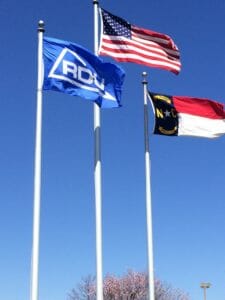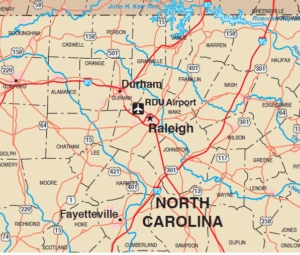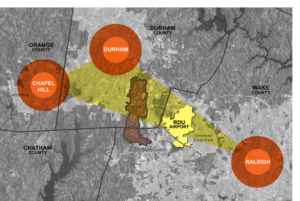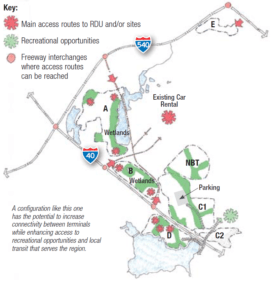Top Story
Advisory Services Panel—Raleigh–Durham International Airport (RDU), North Carolina
April 11, 2014
Date: March 16-21, 2014
Location: Wake County, North Carolina
Sponsor: Raleigh–Durham Airport Authority
Subject Area: Use of Airport Land/Economic Development
Panel Chair: John Walsh
BACKGROUND AND PANEL ASSIGNMENT
Raleigh-Durham International Airport (RDU) sits on 4,900 acres in the center of three counties—Durham, Orange, and Wake—and provides regional service to the Research Triangle metropolitan region of North Carolina, colloquially known as “the Triangle.” More specifically, the area is best known for its three tier-one universities (Duke University, North Carolina State University in Raleigh, and the University of North Carolina in Chapel Hill); its high quality of life; and the Research Triangle Park (RTP), the largest and one of the most successful high-technology research and development parks in the world.
The Airport is served by U.S. 70 and Interstate 40 and boasts parks and open space including Lake Crabtree Park and the William B. Umstead State Park, a 5,000-plus-acre park that shares the airport’s eastern border. The airport serves around 9 million passengers annually, with nine major carriers serving 39 domestic and international destinations. As such, RDU generates an annual economic impact of $8 billion to the Research Triangle region.
All but five acres of the panel’s 4,900-acre study area lie in Wake County, all operated by the Raleigh–Durham Airport Authority, in charge of the airport facilities and its operation. The authority is controlled by a board with representatives from the counties of Wake and Durham, as well as the cities of Raleigh and Durham.
ULI was asked by the RDU Airport Authority to address land owned by the Airport that is not designated or may be required for future aeronautical purposes in a manner that benefits the Research Triangle Region and to identify additional long-term revenue to the Airport Authority that complements the operation of the Airport. The tract includes the land and facilities dedicated to airport operations and support, along with approximately 1,600 gross acres of land that are not related to or anticipated to be related to direct airport operations. The panel relied on site observations, interviews, and a 2011–2013 land planning study conducted on behalf of the RDU Airport Authority.
SUMMARY OF RECOMMENDATIONS
Among the panel’s recommendations were:

A successful development approach requires partner engagement, a shared vision, and trust as well as strong and coordinated leadership.
Airport’s Regional Role:
- Become an airport that provides a world-class passenger experience
- Serve as a “neutral ground” for the region by taking a leading role in the creation of a regional identity by enhancing communications efforts and fully engaging local and regional partners
Economic Development:
- Aeronautical: Develop and implement a strategic plan for development of the Airport to meet future demands for surplus terminal area land, runway passenger service facilities, and cargo
- Non-Aeronautical: Identify and plan sites for development- including analysis of uses, engineering, development costs and appropriate marketing platform
- Utilize surplus land to strengthen airport’s identity and functionality, while coordinating uses within the region for appropriate uses
Environment:
- Create a comprehensive sustainability plan that includes: energy efficiency, utilization and production, environmentally sensitive storm water management, landscape maintenance practices, air quality and carbon emissions
- Protect open spaces and develop new trails systems within and around developed property
Transportation:
- Increase airports connectivity to the region via car, truck, transit and air through active and deliberate participation in the community process and onsite improvements to provide connections to future public transit and highway improvements
- Employ smart airport concepts where possible, to manage the movement of vehicles and parking spaces, delivery of services, and to constantly improve the experience of passengers from the point they arrive and depart from airports


